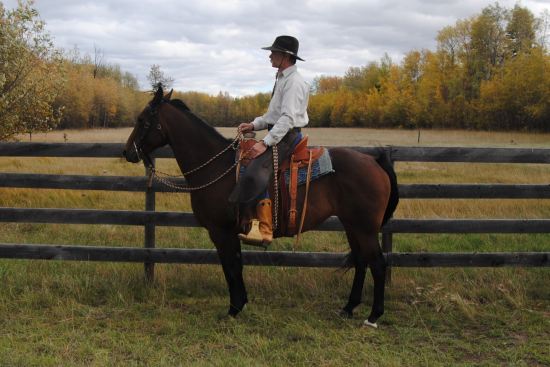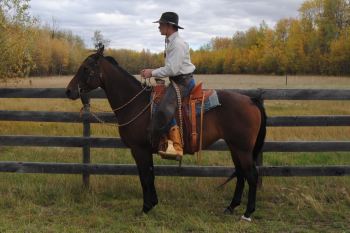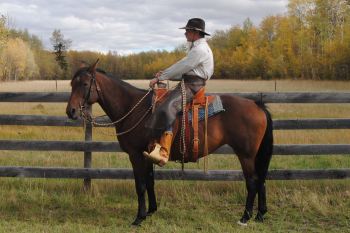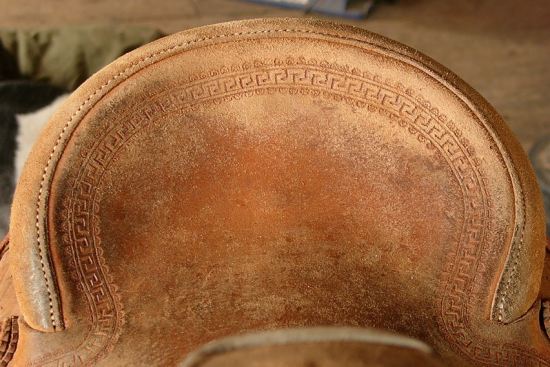The effect of the rider - Part two
We are no longer building saddle trees, but we have two videos about how Western saddles fit horses available on our westernsaddlefit.com website.

In part one about rider effects on the horse, we talked about the effect of movement - horse and rider - on how the rider impacts the horse. (Pun completely unintended.) But how about rider position? What have studies shown about that?
Changes in rider’s position with movement
One 2005 study (1) looked at the angle of the trunk, the thigh and the lower leg compared to a horizontal line, and checked out how that changed at different gaits. It was a small study, using only five experienced riders and, as with almost all studies on anything to do with saddles and riding, it was done with English saddles and riding techniques. It found that at a walk, the riders actually leaned back a slight amount every time a hind foot touched down and leaned ahead a little bit every time a fore foot touched down. At the trot and canter the riders consistently leaned ahead a bit but how much varied throughout the stride. In the same way, the angles of the thigh and lower leg changed consistently throughout the stride and between gaits. (Yes, riders know this, but the study gave it quantitative values.) As always, there was variation between the riders as to how much they moved. So the bottom line? Riders move as they ride, and they move in consistent patterns that change with the gait of the horse. That means that the pressures under the saddle are constantly changing as well.
Symmetry of the rider’s position
What about how evenly the rider sits on the horse? A 2009 study (2) tested 17 dressage riders who knew they were being tested for symmetry. It showed that every one of them was twisted slightly to the left, with the amount varying between gaits. Now, they only tested them on the right rein going down the straight side of the arena, not on the left rein, so did that have something to do with it? Who knows? They also all had slight differences in leg length with the right leg being consistently a tiche shorter than the left. So regardless of why they were uneven, this shows that even advanced dressage level riders aren’t quite straight. What to take from this? We’re all a bit crooked, so we have to work at sitting straight in the saddle.
Straightness of the rider's position
 |
 |
But does being a bit off matter to the horse? Another 2009 study (3) compared pressures under the saddle with the rider sitting in different positions – straight, leaning ahead ten degrees with a hollowed back, leaning back ten degrees while slouching and leaning to one side ten degrees. Major differences were found in the distribution of pressures under the saddle, with higher pressures under the direction of lean. Surprise, surprise… But how many of us do this?

Here is a picture of the seat of a saddle from a rider who habitually rode to the right. If the pressure difference in how they sat could wear the leather that much differently, you better believe the horse felt the difference too. We know of cases where one saddle sored horses under an uneven rider when the same saddle was perfectly fine with other riders. What does the wear pattern in your saddle look like?
Take home message here – sit up straight to help your weight be distributed evenly over the entire saddle.
And the practical application is…
So much for the studies. What practical use can we make from this information regarding saddles and horses? A few things come out of them. The first is similar to the conclusion in the last post. Since there is a consistent pattern of movement depending on gait, learning how to follow your horse’s movement at different gaits will help you ride quietly and result in lower pressures under the saddle.
The second is that rider positional changes affects pressure under the saddle. Remember back to the Reswick and Rogers graph that compared pressure over time, trying to theorize about how much pressure would cause damage? It suggests that even low pressures, if unrelenting, can cause damage over long time periods. Practically, this means that rider and horse movement that causes the pressure to change is a good thing – within limits, of course... Sitting stationary and not allowing your horse to move for extended time periods, such as when watching others ride during clinics or just sitting and visiting, is not a good thing. If you have to be stationary for more than a few minutes, either change things so you can move, or get off your horse. Don’t just sit there.
The third is that consistently leaning back or forward on your horse will cause uneven pressures under your saddle. The old “cowboy with the feet ahead slouched back in the saddle” position causes higher pressures under the back of the saddle. Sit up straight.
And finally, if you consistently sit unevenly on your horse, you will cause problems as you consistently create higher pressures under the side you lean towards. This is one reason to occasionally ask people you are riding with if you are sitting straight. If the answer is no, then you need to check the reason for the asymmetry. It could be in saddle, horse, padding, uneven loads on the saddle from things you have tied on, etc. But it may very well be you - and that is something you can change... Also, if constant pain for the rider is causing asymmetry, such as from a bad hip or arthritis, then a saddle maker may be able to make the groundseat asymmetrical so that even though the rider is sitting crooked, the pressures on the horse are even. But then it needs to be changed back if the saddle ever goes back to a healthy rider.
Bottom line - movement is good, unevenness is bad, learning to ride well is best!
(1) A preliminary investigation of rider position during walk, trot and canter, Thomas Lovett, Emma Hodson-Tole, Kathryn Nankervis, Equine and comparative Exercise Physiology (2005) 2 (2); 71-76
(2) A preliminary study into rider asymmetry within equitation, Debbie Symes, Robert Ellis, The Veterinary Journal (2009) 181 (1) 24-37
(3) Usability of normal force distribution measurements to evaluate asymmetrical loading of the back of the horse and different rider position on a standing horse, Patricia de Cocq, Hilary M. Clayton, Kayo Terada, Mees Muller, Johan L. van Leeuwen, The Veterinary Journal (2009) 181 (3) 266-273
